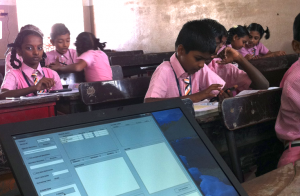For many of us, the conversation around mobile learning has shifted from asking whether mobile devices present educational opportunities to how they might best do so.
From that second question, a new initiative has been launched: SMILE, the Stanford Mobile Inquiry Learning Environment, an idea, which, in practice, is almost staggeringly simple. Essentially, SMILE is a learning management system that allows students to create, share, answer, and evaluate questions in a collaborative manner through the use of cell phones.
Students use mobile devices -- typically android phones that are connected to the same network -- to create their own multiple-choice questions about a given topic. Their classmates answer those questions, and evaluate them based on their difficulty. While the devices need to be connected to each other, they don't necessarily need to be connected to the outside Web, which is a key issue for some communities around the globe, said Paul Kim, the assistant dean and chief technology officer of Stanford University's Office of Innovation & Technology and SMILE's creator.
The drive to make questions that score higher on their peers' difficulty index ultimately spurs students to think about the subject material in a deeper way, Kim says. And while there are some shortcomings—such as the lack of allowance for longer-form responses like written answers and essays, and a reliance mostly on more simple content elements such as texts and still photographs—the system's simpleness allows it to be used in a variety of educational environments, ranging from a rural village in southern Africa to a medical school classroom at Stanford itself.
But creating such a project is one thing. Actually putting it into practice is another. So Kim, who has also helped launch SMILE in India, Argentina, and suburban Northern California, shares some of his tactics and lessons learned about how best to launch this project even in communities that are unlikely to have Internet access -- or sometimes even electricity.


